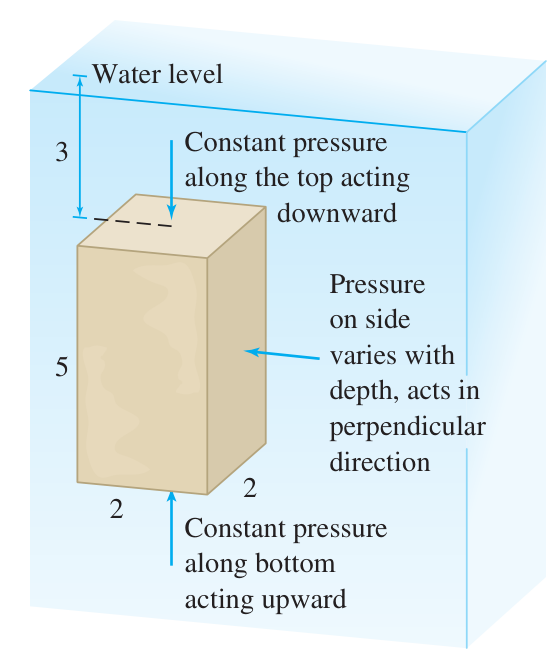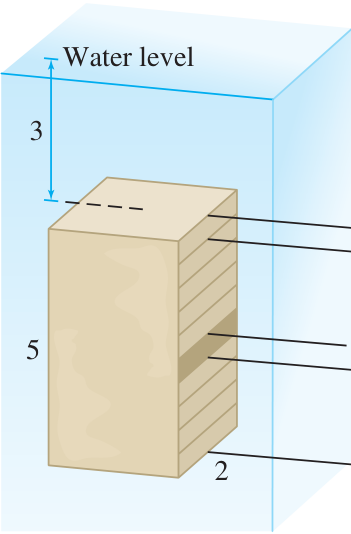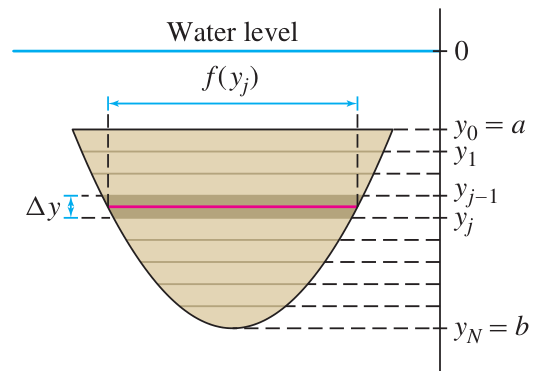Theory 1
The pressure in a liquid is a function of the depth alone. This is a fundamental fact about liquids.
Pressure function
The fluid pressure in a liquid is a function of depth
: Constants:
In SI units:
The pressure of a fluid acts upon any surface in the fluid by exerting a force perpendicular to the surface. Force is pressure times area. If the pressure varies across the surface, the total force must be calculated using an integral to add up differing contributions of force on each portion of the surface.

Fluid force on submerged plate
Total fluid force on plate:
Use
for top of plate (shallow edge) and for bottom of plate (deep edge). Use
when at the water line, and increases with depth. (Other
are possible, e.g. if )
Vertical plate
This formula assumes the plate is oriented straight vertically, not slanting.
(Add the factor
for a plate tilted by angle .)


Theory 2
What if the submerged surface is not oriented straight vertically?
The amount of surface for a horizontal strip at a given depth will be increased by a factor of
where
So the total force formula becomes:
Fluid force for tilted surface
Total fluid force on tilted plate:
As before,
measures depth with at the surface.